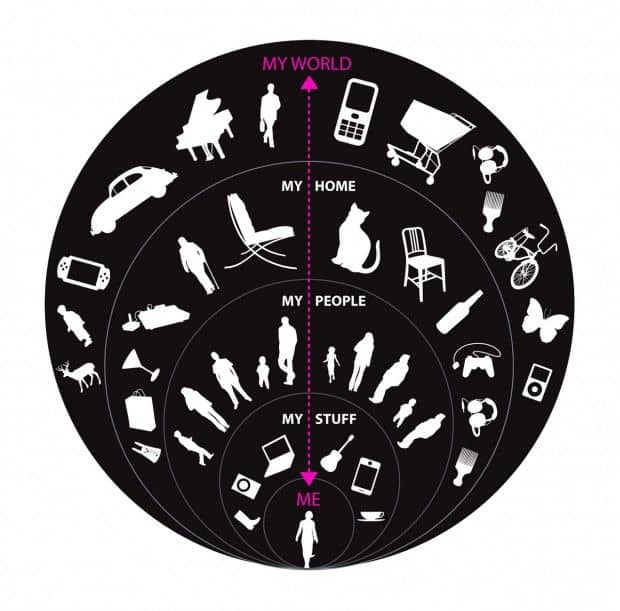Not long ago, I was having a conversation with my parents via Skype, telling them all about my latest idea of equipping my new apartment with a Bluetooth-enabled light bulb.
After explaining that by using an app on my smartphone, I could turn the light on and off, change the color of the light, and even transform the light into a disco ball, they asked,
“So… basically, you want to have a party house?”
“No, I want to control my lights from my phone!” I exclaimed, feeling slightly exasperated.
“…But what’s wrong with the switch?”
Party house, powered by smart light bulb

Everything in our lives is turning “smart”, from our homes to the offices to the streets, everything is becoming connected. Our devices are starting to speak to each other, to share valuable information and we’re constantly building even newer machines to do things that our parents’ generation never imagined to be remotely plausible. We’re living the Internet of Things, a world connected by ubiquitous, flexible computing and in which our devices make up a huge ecosystem.
These are exciting times for consumers who are enabled by new smart products and also, for innovators who create cutting-edge products powered by cloud computing and web technologies. But what does this mean, really, for designers? Where do designers fit in within the grand scheme of the Internet of Things? How do you design for better user experiences when products sometimes aren’t even actual physical products? How do you design relevant products with purpose?
We gathered some good advice and resources out there to help you get warmed up for this exciting journey.
Products With Purpose
A smart light bulb that can be turned on and off with the flick of a finger across a mobile phone sounds pretty cool. But it still brings us back to the question that my confused parents asked, “What’s wrong with the switch?” When developing ideas for new products, we must always ask ourselves, “Is this a compelling use of the technology?”
We all want to avoid this scenario…

Of course, there’s so much more that a smart light bulb could do, such as gather and stream data on electricity usage via cloud computing, program the bulb to turn on at certain times for a natural way to wake up, collect data on sleep cycles… so on and so forth. That is also pretty cool. Yet, without filters to sift out the useful data from the noise based on contextual need, what we eventually get is merely a stream of data. That doesn’t sound so sexy anymore, does it?
It’s what our products do with data in order to enhance our quality of life that determines its value. Designers are in a unique position to help shape the future of the Internet of Things by making it user-centered. Actively looking at culture and identifying human needs to consider how technology could solve persistent problems isn’t just part of the design process. It is the design process. Designers for the Internet of Things should bear in mind these three things that products need to do well in order to have a positive impact on human life, as outlined by Justin Zalewski in his article ‘Interaction Design within the Internet of Things’.
1. Simplify Life
2. Enable Users
3. Shape Behaviour
Watch this short video from Studio Science that sums it up.
And I’m sure you do. The challenge of designing for the Internet of Things isn’t always about creating spectacular new products. It’s also about rethinking the way we design currently available products to fit within a new paradigm of connectivity. It’s about designing ordinary products such as mobile apps, tablets, desktops, smart watches, light bulbs and refrigerators so that the new features and services that these things offer us make sense and are useful in helping us solve problems that we face in everyday life.
Now, this used to be a lot simpler, I’m sure you would agree.

Think about it. We used to have a user interacting with a mobile phone to perform certain actions, such as dialing a number on the keypad, in order to accomplish a goal. There is a single touchpoint, the keypad, and its affordance couldn’t be more obvious. There is one action, to dial, and there is one goal — talk to someone.
Then, keypads started disappearing, tablets started getting chummy with mobile phones, along with the refrigerator that wants to read your tweets and that special cat collar that wants to send information about your cat’s health to your mobile phone, email, Facebook and iCloud. Not to mention, Siri wants to make your phone calls these days.
Now, it looks kind of like this:

lllustrated by design practice Superflux
Well, that escalated quickly. So where should we even begin?
How To Begin Designing Products with Purpose for the Internet of Things
A fantastic starting point would be to consider these tools shared by David Sherwin at HOW Design Live 2014. Starting first by asking “Who is interacting with What”, then moving on to the “How” and finally, the “Why” and “What if”, these three tools provide us with an orderly and effective approach to managing the complexity of designing for a hyper-connected world.
- Ecosystem mapping, perhaps the most important of them, is about identifying the different entities involved. These include the profiles of different types of users, the devices they use and the services offered by these devices. Then, it requires arranging the devices according to frequency of access, determining how to collect data by locating the sensors on the devices, defining how the data is communicated between devices through services, and finally, deriving the relationships between people, device and service.
- User behavior involves identifying how a user would interact with each device and in turn, what data gets passed on to secondary devices. From there, the best ideas are imagined into stories, a useful tool already familiar to most designers.
- Stories help to envision touchpoints from multiple perspectives within the ecosystem. The best stories go into detail as to why a user chooses to act in a certain way and not otherwise. They explain motivation, conflict points, and resolutions.
Designing for the Internet of Things may sound like a rather daunting task and it sure can be. But armed with the right tools and a good understanding of how to create products with purpose, your work would be key to helping shape future products to be focused on users, not just features. Design is essential to ensuring that the Internet of Things isn’t just about rolling out streams of data, but about creating products that serve the purposes of simplifying life, enabling users and shaping behavior.





